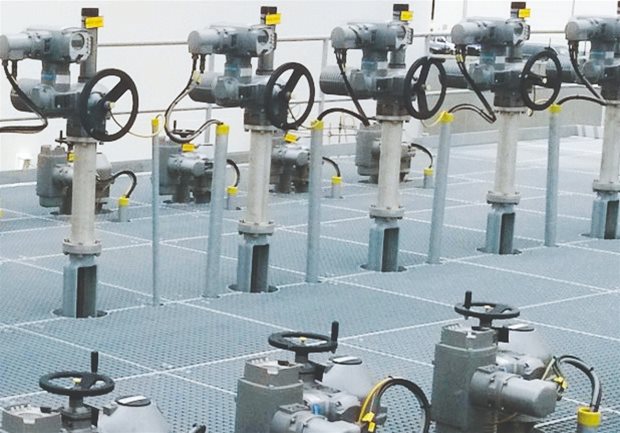There are two distinct functions that a valve actuator performs – the ‘intelligence’ of managing digital or analogue control signals and feedback loops, and the ‘brute force’ to open and close a variety of different valve types.
AUMA separates the ‘intelligence’ and ‘brute force’ by taking a modular approach to its actuator construction. This provides an enhanced choice of actuator configuration for the customers, dependent on the end application.
Analogue or digital control heads or, indeed, no control head, can be connected to a range of different drive units through AUMA’s common interface.
The symmetrical connection design enables the head to be connected in one of four different orientations.
In addition, the basic actuator can be built on-site in up to 64 different configurations. The control head can also be connected through an umbilical cable of up to 100m in length, so the two components can be separated for safety or operational convenience, for example in underground or underwater applications.
While fixed speed open/close functionality satisfies the majority of valve actuation situations, there are opportunities available from more sophisticated variable speed actuators. Water hammer can be a significant issue in many applications. Valve seats suffer if they are driven hard to their end positions whenever the valve is closed. A variable speed actuator, such as the AUMA SIPOS SEVEN, gives the control engineer the opportunity to specify the speed of actuation at different points in the cycle. The usual way that this is employed is to move the valve quickly through the majority of its cycle, slowing it down as it nears the close position, alleviating water hammer problems, and extending the life of the valve seat. For emergency situations a ‘fast close’ speed can be specified.


